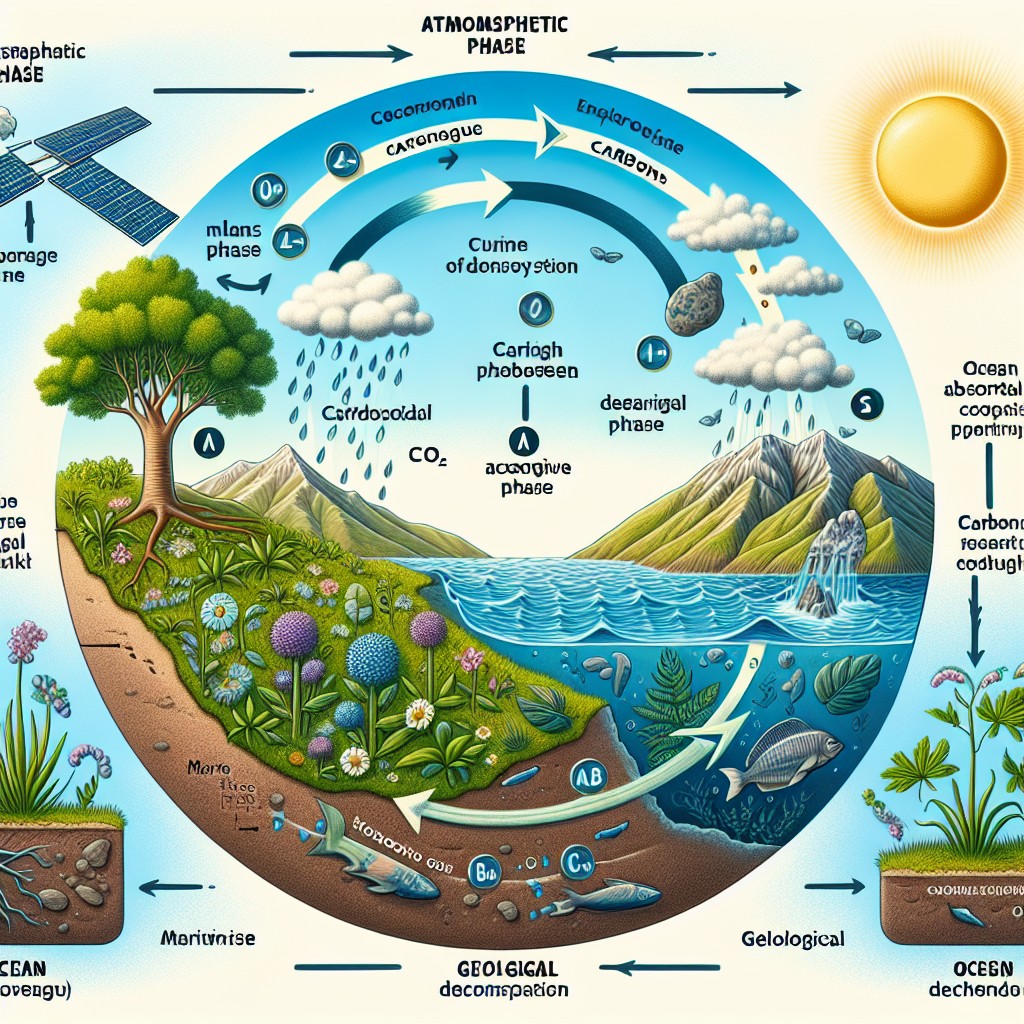Energy storage has become increasingly important in recent years due to the growing demand for reliable and sustainable energy sources. As renewable energy technologies such as solar and wind power continue to gain popularity, the need for efficient and cost-effective energy storage solutions has become more pressing. Energy storage plays a crucial role in enabling the integration of renewable energy into the grid, as it allows excess energy to be stored and used when needed.
Summary
- Energy storage is crucial for the future of renewable energy.
- Lithium is a versatile and efficient element for energy storage.
- Lithium-ion batteries work by moving ions between electrodes.
- Lithium’s unique properties make it ideal for energy storage, including its high energy density and low weight.
- Lithium-ion batteries have a wide range of applications, from smartphones to electric cars.
Lithium: The Wonder Element of Energy Storage
Lithium is often referred to as the “wonder element” of energy storage due to its unique properties that make it an ideal choice for battery technology. It is the lightest metal and has a high electrochemical potential, which means it can store a large amount of energy in a small volume. Additionally, lithium is highly abundant in the earth’s crust, making it a readily available resource for battery production.
The use of lithium in energy storage dates back to the 1970s when researchers first discovered its potential as a battery material. Since then, lithium-ion batteries have become the dominant technology for portable electronics such as smartphones and laptops. In recent years, they have also gained traction in the electric vehicle market and are now being explored for grid-scale energy storage applications.
How Lithium-Ion Batteries Work: A Deep Dive
Lithium-ion batteries consist of several key components, including a cathode, an anode, and an electrolyte. During charging, lithium ions move from the cathode to the anode through the electrolyte, where they are stored as potential energy. When the battery is discharged, the ions move back to the cathode, releasing their stored energy.
The chemical reactions that occur during charging and discharging involve the movement of lithium ions between the cathode and anode materials. The cathode is typically made of lithium cobalt oxide or lithium iron phosphate, while the anode is usually made of graphite. The electrolyte, which is a liquid or gel-like substance, allows for the movement of lithium ions while preventing the flow of electrons.
Lithium’s Unique Properties: What Makes it the Ideal Choice for Energy Storage?
| Property | Description |
|---|---|
| High Energy Density | Lithium batteries have a high energy density, meaning they can store a lot of energy in a small space. |
| Low Self-Discharge Rate | Lithium batteries have a low self-discharge rate, meaning they can hold their charge for a long time without losing power. |
| Long Cycle Life | Lithium batteries have a long cycle life, meaning they can be charged and discharged many times without losing capacity. |
| Fast Charging | Lithium batteries can be charged quickly, making them ideal for use in electric vehicles and other applications where fast charging is important. |
| Lightweight | Lithium batteries are lightweight, making them ideal for use in portable devices and applications where weight is a concern. |
| Low Maintenance | Lithium batteries require little maintenance, making them a convenient and cost-effective choice for energy storage. |
One of the key advantages of lithium-ion batteries is their high energy density, which means they can store a large amount of energy in a small and lightweight package. This makes them ideal for portable electronics and electric vehicles, where weight and size are important considerations.
Another important property of lithium-ion batteries is their low self-discharge rate. This means that they can retain their charge for extended periods without losing significant amounts of energy. This is particularly important for applications such as electric vehicles, where the battery needs to hold its charge even when not in use.
Lithium-ion batteries also have the ability to handle high discharge rates, which is crucial for applications that require a sudden surge of power. This makes them suitable for use in electric vehicles, where rapid acceleration and regenerative braking require high power output.
Applications of Lithium-Ion Batteries: From Smartphones to Electric Cars
Lithium-ion batteries have found widespread use in portable electronics such as smartphones, laptops, and tablets. Their high energy density and long lifespan make them ideal for these applications, where compact size and long battery life are important considerations.
In recent years, lithium-ion batteries have also gained popularity in the electric vehicle market. The ability to store large amounts of energy in a small and lightweight package makes them well-suited for powering electric cars. Additionally, their high power output allows for rapid acceleration and regenerative braking, improving overall performance.
There is also growing interest in using lithium-ion batteries for grid-scale energy storage. As renewable energy sources such as solar and wind power become more prevalent, the need for large-scale energy storage solutions becomes increasingly important. Lithium-ion batteries have the potential to provide this storage capacity, allowing excess energy to be stored and used when needed.
The Advantages of Lithium-Ion Batteries: Efficiency, Longevity and Cost-Effectiveness

Lithium-ion batteries offer several advantages over other types of energy storage technologies. One of the key advantages is their high efficiency, which means they can convert a large percentage of the stored energy into usable electricity. This is important for applications where energy efficiency is a priority, such as electric vehicles and grid-scale energy storage.
Another advantage of lithium-ion batteries is their long lifespan. With proper care and maintenance, lithium-ion batteries can last for several years, making them a cost-effective choice for energy storage. This longevity also helps to reduce the environmental impact of battery production and disposal.
In recent years, the cost of lithium-ion batteries has been steadily decreasing. This is due to advancements in battery technology, economies of scale, and increased competition in the market. As a result, lithium-ion batteries have become more affordable and accessible, making them a viable option for a wide range of applications.
The Future of Energy Storage: How Lithium is Paving the Way for Renewable Energy
Lithium-ion batteries have the potential to revolutionize the energy landscape by enabling the widespread integration of renewable energy sources. As solar and wind power become more prevalent, the ability to store excess energy becomes increasingly important. Lithium-ion batteries can provide this storage capacity, allowing renewable energy to be used when the sun isn’t shining or the wind isn’t blowing.
By enabling renewable energy integration, lithium-ion batteries can help to reduce greenhouse gas emissions and mitigate climate change. As fossil fuel consumption decreases and renewable energy becomes more prevalent, the environmental benefits of lithium-based energy storage will become even more significant.
The growth of the lithium-ion battery market has been impressive in recent years, with demand expected to continue rising. This growth is driven by the increasing adoption of electric vehicles, as well as the growing need for grid-scale energy storage. As the market expands, there will be opportunities for innovation and investment in battery technology, further driving down costs and improving performance.
Challenges and Opportunities: Overcoming the Hurdles in Lithium-Based Energy Storage
While lithium-ion batteries offer many advantages, there are still challenges that need to be addressed. One of the main challenges is improving battery performance and safety. Lithium-ion batteries can be prone to overheating and fires if not properly designed and manufactured. Research is ongoing to develop new materials and designs that can improve the safety and performance of lithium-ion batteries.
Another challenge is the responsible mining and recycling of lithium. As demand for lithium-ion batteries increases, so does the demand for lithium extraction. It is important to ensure that mining practices are sustainable and environmentally friendly. Additionally, efforts should be made to recycle lithium-ion batteries at the end of their life cycle to minimize waste and recover valuable materials.
There is also potential for new battery chemistries to compete with lithium-ion batteries in the future. For example, solid-state lithium-ion batteries are being developed, which offer higher energy density and improved safety compared to traditional lithium-ion batteries. Other technologies, such as lithium-sulfur batteries, also show promise for surpassing the performance of lithium-ion batteries.
Innovations in Lithium-Based Energy Storage: The Latest Breakthroughs and Developments
Researchers and engineers are constantly working on new breakthroughs and developments in lithium-based energy storage. One area of focus is the development of solid-state lithium-ion batteries, which use a solid electrolyte instead of a liquid or gel-like electrolyte. Solid-state batteries offer several advantages, including higher energy density, improved safety, and longer lifespan.
Artificial intelligence (AI) is also being used to optimize battery performance. AI algorithms can analyze data from battery sensors and make real-time adjustments to optimize charging and discharging cycles. This can help to extend battery life, improve efficiency, and reduce the risk of battery failure.
Lithium-sulfur batteries are another area of research that shows promise. These batteries have the potential to surpass the energy density of lithium-ion batteries, making them ideal for applications that require long-lasting power. However, there are still challenges to overcome, such as the degradation of the sulfur cathode over time.
The Promising Future of Lithium-Based Energy Storage and its Potential to Change the World
Lithium-based energy storage has the potential to transform the energy landscape and pave the way for a more sustainable future. The unique properties of lithium make it an ideal choice for battery technology, enabling high energy density, long lifespan, and high power output.
As renewable energy sources become more prevalent, the need for efficient and cost-effective energy storage solutions becomes increasingly important. Lithium-ion batteries offer a viable solution for storing excess energy from renewable sources and using it when needed.
However, there are still challenges that need to be addressed, such as improving battery performance and safety, responsible mining and recycling of lithium, and the potential for new battery chemistries to compete with lithium-ion batteries.
Despite these challenges, the future of lithium-based energy storage looks promising. Continued innovation and investment in battery technology will drive down costs, improve performance, and enable the widespread adoption of renewable energy sources. Individuals and organizations have a role to play in promoting sustainable energy solutions and supporting the transition to a cleaner and more sustainable future.
FAQs
What is Lithium (Li)?
Lithium (Li) is a chemical element with the symbol Li and atomic number 3. It is a soft, silvery-white alkali metal.
Where is Lithium found?
Lithium is found in small amounts in the earth’s crust and in the oceans. It is also found in some minerals, such as spodumene and lepidolite.
What are the uses of Lithium?
Lithium is used in a variety of applications, including batteries, ceramics, glass, lubricants, and pharmaceuticals. It is also used in the treatment of bipolar disorder.
What are the properties of Lithium?
Lithium is a highly reactive metal that is soft and lightweight. It has a low melting point and boiling point, and is a good conductor of heat and electricity.
Is Lithium toxic?
Lithium can be toxic in high doses, and can cause a range of symptoms including tremors, confusion, and seizures. However, when used in the correct doses for medical purposes, it can be an effective treatment for bipolar disorder.
What are the environmental impacts of Lithium mining?
Lithium mining can have environmental impacts, including water pollution and habitat destruction. However, some efforts are being made to develop more sustainable and environmentally-friendly methods of lithium extraction.


